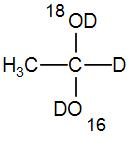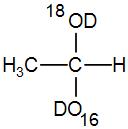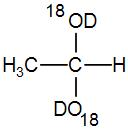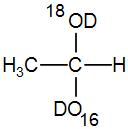
Given the following reaction, the intermediate is:

[A]

[B]

[C]

[D]






Answer
555k+ views
Hint: To answer this, you must know that in a chemical reaction, an intermediate is species which is neither the reactant not the transition state and also not the product yet. Here, the given reaction will proceed by electrophilic addition pathway. You can use this to answer the question.
Complete answer:
We know that in organic chemistry, based upon whether the attacking group is an electrophile or a nucleophile, we can divide the reactions in two groups namely electrophilic and nucleophilic. Further, based upon their pathway and action, we divide them into two further sub-groups named addition reactions and substitution reactions.
In the given question, we can see that we have an ion as a reagent hence we can say that the reaction takes place by the electrophilic pathway. And, the reaction is an additional reaction.
Now, let us see the reaction pathway-

We can understand from the above reaction mechanism that the intermediate this formed is

Therefore, the correct answer is option[B] .
Note:
Electrophilic addition is the addition reaction where the group which is being added is an electrophile i.e. accepts a pair of electrons and nucleophilic addition is the addition reaction where the attacking group is a nucleophile i.e. it will donate a pair of electron.
Similarly, electrophilic substitution is a reaction where the leaving group is substituted by an electrophile and nucleophilic substitution is a substitution reaction where the leaving group is replaced by the nucleophile by attacking on the positively charged atom to which the leaving group is attached.
Complete answer:
We know that in organic chemistry, based upon whether the attacking group is an electrophile or a nucleophile, we can divide the reactions in two groups namely electrophilic and nucleophilic. Further, based upon their pathway and action, we divide them into two further sub-groups named addition reactions and substitution reactions.
In the given question, we can see that we have an ion as a reagent hence we can say that the reaction takes place by the electrophilic pathway. And, the reaction is an additional reaction.
Now, let us see the reaction pathway-

We can understand from the above reaction mechanism that the intermediate this formed is

Therefore, the correct answer is option[B] .
Note:
Electrophilic addition is the addition reaction where the group which is being added is an electrophile i.e. accepts a pair of electrons and nucleophilic addition is the addition reaction where the attacking group is a nucleophile i.e. it will donate a pair of electron.
Similarly, electrophilic substitution is a reaction where the leaving group is substituted by an electrophile and nucleophilic substitution is a substitution reaction where the leaving group is replaced by the nucleophile by attacking on the positively charged atom to which the leaving group is attached.
Recently Updated Pages
Master Class 12 English: Engaging Questions & Answers for Success

Master Class 12 Business Studies: Engaging Questions & Answers for Success

Master Class 12 Economics: Engaging Questions & Answers for Success

Master Class 12 Social Science: Engaging Questions & Answers for Success

Master Class 12 Maths: Engaging Questions & Answers for Success

Master Class 12 Chemistry: Engaging Questions & Answers for Success

Trending doubts
What are the major means of transport Explain each class 12 social science CBSE

Which are the Top 10 Largest Countries of the World?

Draw a labelled sketch of the human eye class 12 physics CBSE

Explain sex determination in humans with line diag class 12 biology CBSE

The pH of the pancreatic juice is A 64 B 86 C 120 D class 12 biology CBSE

Explain sex determination in humans with the help of class 12 biology CBSE




